In the vast silence of the Nubra Valley, where the winds whisper ancient prayers and the mountains keep their solemn watch, there lies a lake that does not appear on many maps. It is not Pangong. Not Tso Moriri. And despite what some guides might say, it is not Yarab Tso.
This is Lofan Tso, a name spoken in hushed tones by villagers, a mirror of the soul and a sanctuary for those seeking not selfies but serenity.
This is not just a destination. It is a journey through myth, memory and mountains.
Journey into Stillness


To reach Lofan Tso, you must surrender to the road.
Start in Leh, the heart of Ladakh and cross over the mighty Khardung La, one of the highest motorable roads in the world. As you descend into Nubra’s golden dunes and quiet villages, the chaos of modern life begins to fall away.
Your goal lies beyond the village of Sumur, up a quiet trail that climbs gently for 30–45 minutes. The land is silent. The air feels lighter. You are being drawn inward.
And then it appears: a crystal pool cupped by rocky slopes, a secret kept safe by time itself.
More than a Lake


For the people of Nubra, Lofan Tso is not a destination. It is a presence. A living, breathing spirit that has watched over the valley long before cameras and roads arrived. To locals, it is a gift from the gods, a place of meditation, of visions, of purity.
They say a lama once found himself guided by light to this sacred water. Here, he experienced a revelation, a moment of such immense clarity that it changed his path. Though no written record exists, stories of this encounter still ripple through local memory like waves on the lake.
No prayers are spoken aloud here. Wishes are not shouted. You come, you sit and if your heart is clear, perhaps the lake listens.
Whispers from 2500 BC
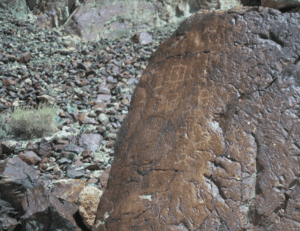

Long before tourists wandered into Ladakh, this lake was revered by lamas and villagers alike. One tale speaks of a great lama who followed a divine light through the mountains and meditated beside the lake, where he glimpsed the secrets of the universe.
On your way up, look closely you might spot petroglyphs carved into the stones: ancient ibex, deer, stupas. They’re whispers from 2500 BC, telling stories of those who walked here thousands of years ago.
This isn’t just a hike. It’s a pilgrimage through time.
The Guardian of the waters
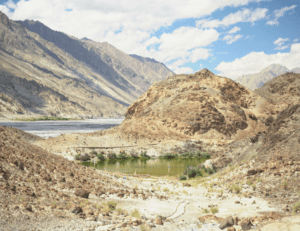

Beside the lake stands a shrine.
The villagers speak of Kushwar, the spirit guardian of Lofan Tso. He is not a myth. He is a presence, respected, feared, protected. The shrine, rebuilt after a devastating flood in 2018, stands as a reminder of nature’s power and the unseen threads of belief that bind Ladakhi culture.
They say the water level of the lake tells the future. That if its surface stirs unprovoked, something is coming.
And so, even festivals like Hashala are not celebrated here, lest they disturb the sacred balance.
Stay like a Local, not like a Tourist


To truly experience Lofan Tso, stay close. Sumur, Hunder and Akgyam offer serene village life with Mountain Homestays, where comfort meets culture.
Wake up to traditional breakfast. Talk to your host about legends passed down through generations. Walk slowly. Listen deeply. That’s how this land speaks.
The echoes of a Forgotten Civilization
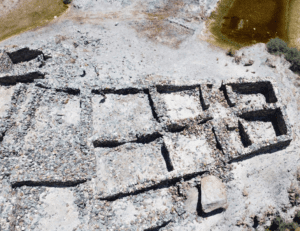

But Lofan Tso is not just spiritual. It is archaeological. It holds the imprints of life that predate Ladakh’s kingdoms. Pottery shards near its shores date back to 2500 BC, the same period as the Neolithic Burzahom site in Kashmir. Along the footpath, ancient petroglyphs etched into stone depict stupas, ibexes and horses, connecting today’s trekker to a lineage of humans who once walked the same route.
You aren’t just hiking to a lake. You are following a trail walked by sages, warriors, traders and unknown wanderers who stood in awe of the same water that now lies before you.
When to visit
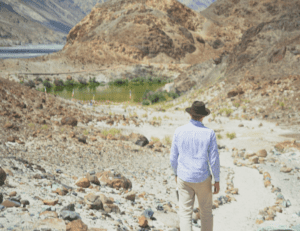

Visit between May and September, when the valley opens its arms and the lake melts free from ice. Plan well, mobile networks fade and the silence stretches farther than signal towers. Stay in a homestay in Sumur or Hunder, local homes, where the fire is real and the stories are alive. Mountain Homestays supports these quiet shelters, offering not just a place to sleep, but a way to understand Ladakh from within.
And when you walk to Lofan Tso, walk gently. Speak softly. Carry your waste back. Let your camera click quietly. Some places are sacred not because of what we build around them, but because of what we leave untouched.
The Lake that listens
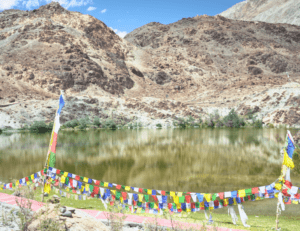

Lofan, meaning “benefit of the heart,” reflects emotions like joy and sorrow, serving as a mirror for the soul. Unlike typical tourist spots, Lofan Tso invites visitors who listen, believe and appreciate nature, leaving them transformed.
And perhaps, one day, you’ll arrive too.
Not for the lake.
But for what it reveals in you.

